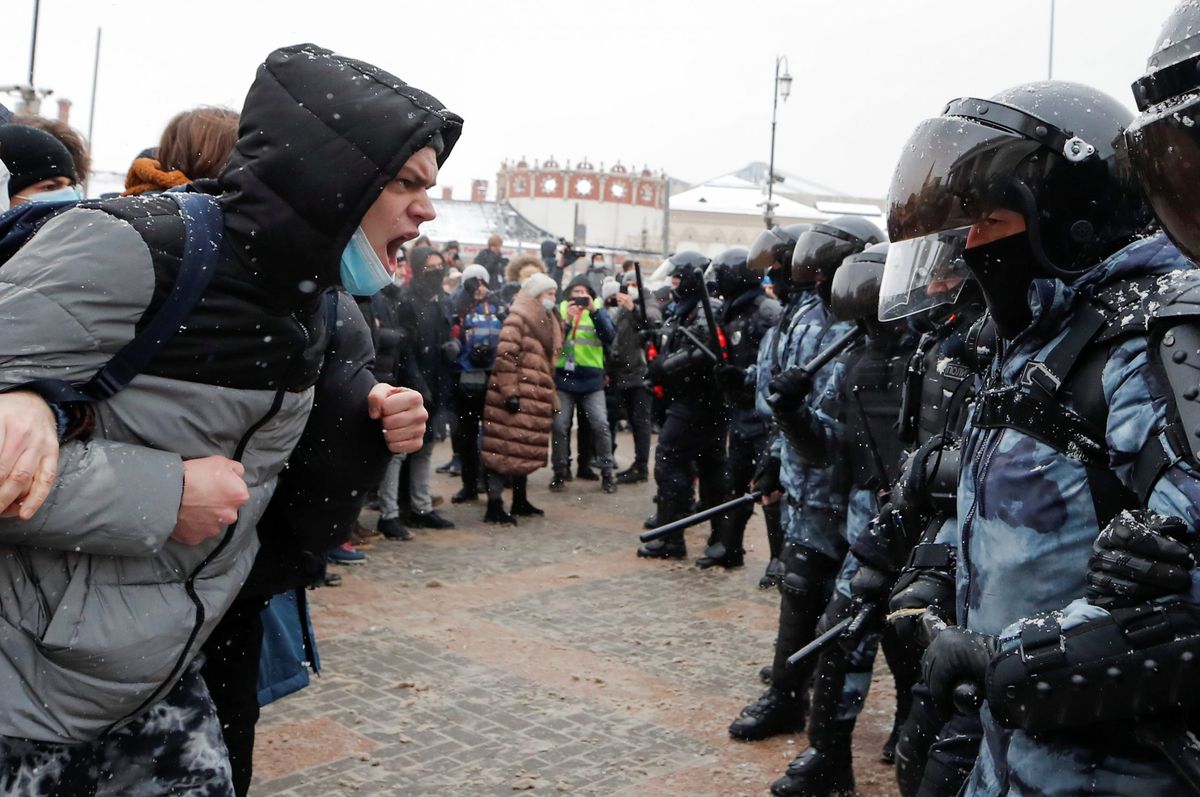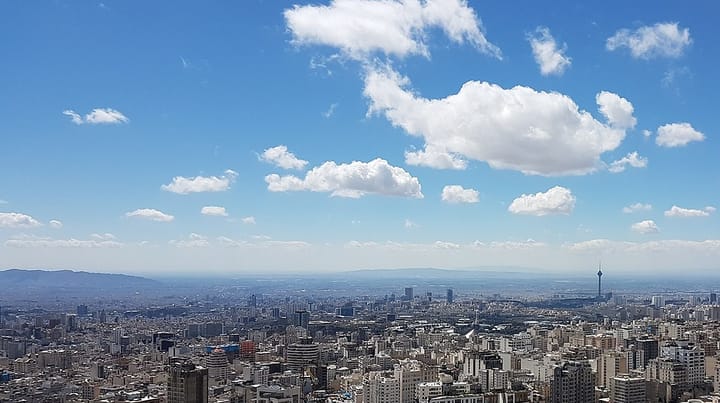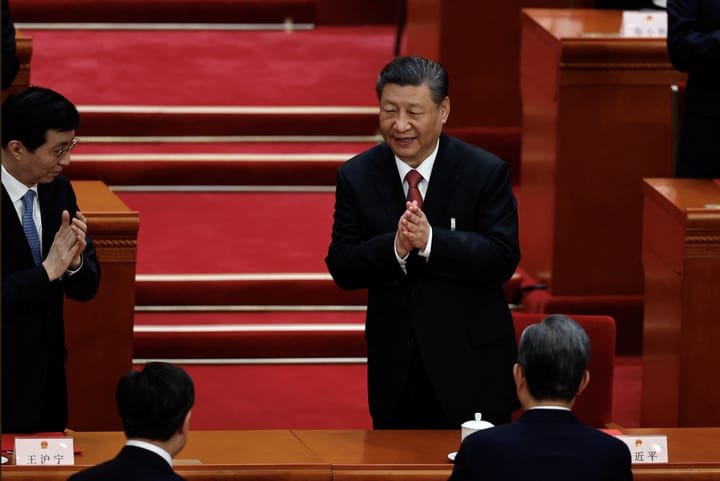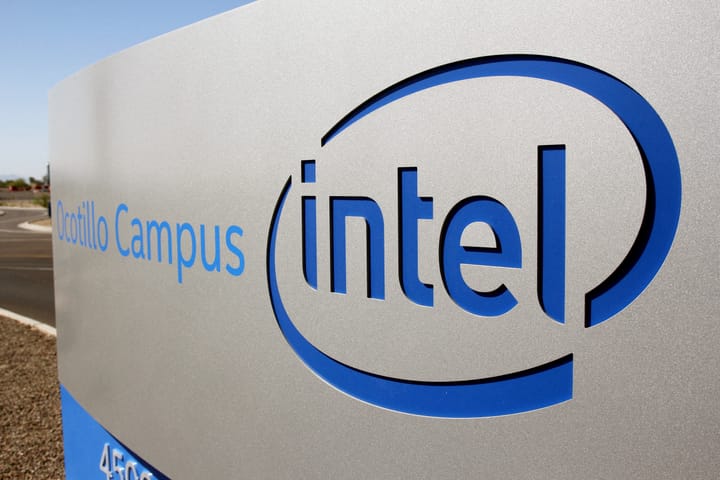Alexei Navalny and the Russian protests, explained

A few minutes every morning is all you need.
Stay up to date on the world's Headlines and Human Stories. It's fun, it's factual, it's fluff-free.
Navalny’s arrest has sparked nationwide riots across the country and a scandal over allegations that Russian President Vladimir Putin has a secret US$1.3 billion compound on the Black Sea.
Russian opposition leader Alexei Navalny was arrested on January 17 shortly after his plane touched down in Russia. Navalny had spent the last several months in Germany recovering from a near fatal poisoning.
Navalny’s arrest has sparked nationwide riots across the country and a scandal over allegations that Russian President Vladimir Putin has a secret US$1.3 billion compound on the Black Sea.
Who is Alexei Navalny?
Navalny is the leader of the Russia of the Future party, an anti-corruption party that has led the charge against Putin’s United Russia Party. Navalny and his team are also famous for releasing video reports on YouTube and elsewhere detailing the mass corruption of Russia’s public officials.
Last August, Navalny was flown to Germany where he was hospitalized for what doctors determined to be nerve agent poisoning. Russia is notorious for its political poisonings, which have resulted in the illnesses and deaths of several Putin critics.
Putin has denied any involvement in the poisoning of Navalny.
On January 17, Navalny returned to Russia where he was immediately arrested over allegations that he had violated his probation stemming from a 2014 money laundering conviction that Navalny rejects as politically motivated. Navalny allegedly violated his probation by not registering with Russian authorities while he was in Germany, a claim his defense lawyers call unreasonable as Navalny was in the hospital at the time and unable to do so.
Immediately after his arrest, Navalny’s team released a video report on YouTube that revealed the existence of a US$1.3 billion compound allegedly built for Putin. The video, which has gotten over 100 million views, revealed a massive resort, featuring everything from expensive Italian furniture to lavish toilet brushes.
Putin has denied the allegations that the mansion was built for him.
United States Secretary of State Antony Blinken said that the US has “deep concern for Mr. Navalny’s safety and security,” during his first press briefing as secretary of state. “The larger point is that his voice is the voice of many, many, many Russians and it should be heard, not muzzled.”
In comments from his jail cell, Navalny called his jailing a mockery of justice, saying, “it was demonstrative lawlessness intended to scare me and all others.”
“You won’t succeed in scaring tens of millions of people who have been robbed by that government,” Navaly added. “Yes, you have the power now to put me in handcuffs, but it’s not going to last forever.”
The protests
On January 24, tens of thousands of Russians flooded onto the streets in more than 100 cities to protest Navalny’s arrest and demand his release in what has been the most widespread show of anger toward the Kremlin in years.
“The scale of it was definitely different,” said Maria Pevchikh, an investigator on Navalny’s team, in a BBC interview. “We haven’t seen anything like that really ever, probably, because we’re talking about these so-called unauthorized and sanctioned processes. So the state has not authorized those people to go into the streets, so those people are risking … everything, they’re being arrested, being beaten up and they still went.”
Over 4,000 Russian citizens were arrested during the protests, according to OVD-Info, a human rights group monitoring political arrests. That number is the highest during the Putin era so far and there are an additional 20 criminal investigations ongoing related to the protests. Human rights activists also said there were instances of violence and forms of aggressive dispersion used.
On January 27, Moscow police raided a number of buildings connected to Navalny, including the offices of associates and other opposition leaders, as well as Navalny’s apartment. Five people have been detained, including Navalny’s brother, Oleg.
Many other allies of Navalny and the Russia of the Future party have also been detained or fined due to activities related to the protests.
In some cities, these protests took place in minus 50 degree Celsius weather, highlighting the intensity of the demonstrations.
The Russian government has responded to the protests by accusing Navalny and his team of encouraging minors to take to the streets, an allegation that Navalny’s team has denied.
Further protests have continued to take place, with the only reduction in numbers coming from those missing because they were arrested following the earlier protests.
“The endgame here is to remove Vladimir Putin from power,” said Pevchikh, adding that while “we appreciate all sorts of support that has been coming in,” Russian protesters were “fully aware that we need to solve our internal Russian problems ourselves.”
Have a tip or story? Get in touch with our reporters at tips@themilsource.com




Comments ()